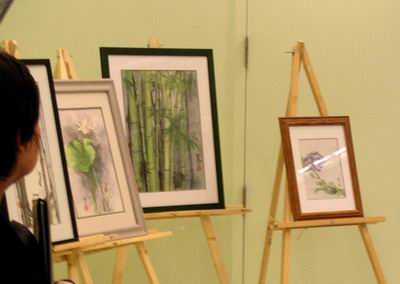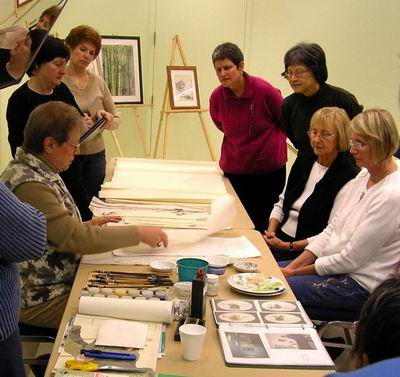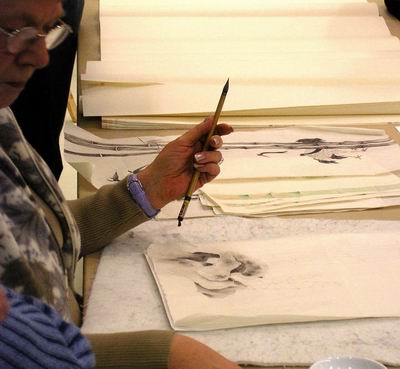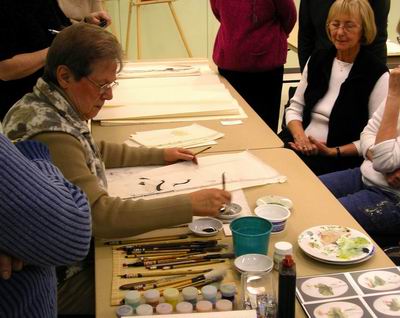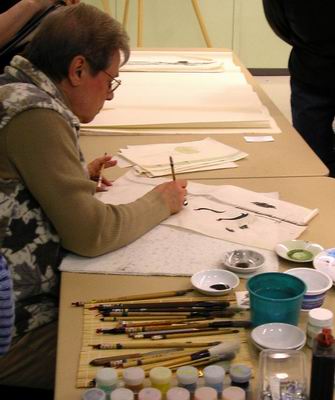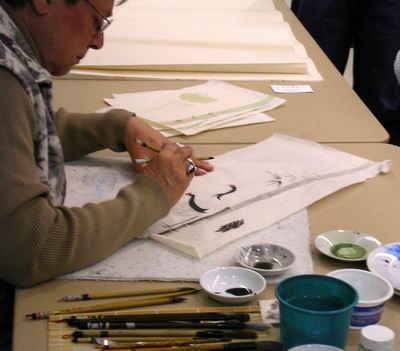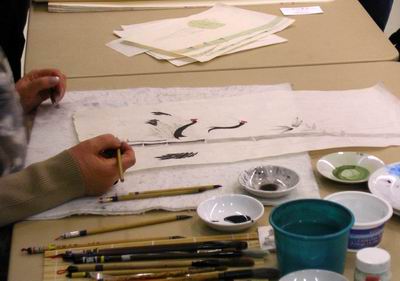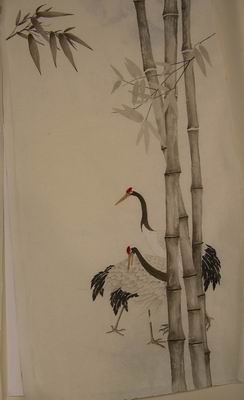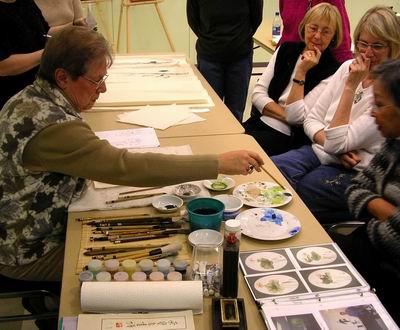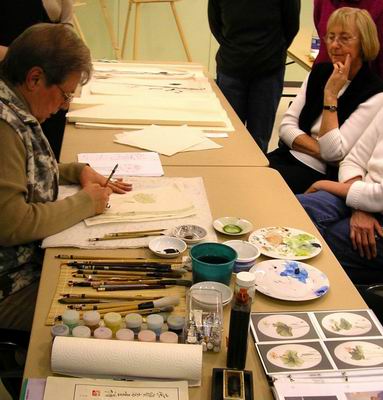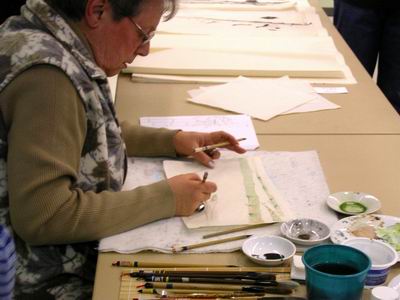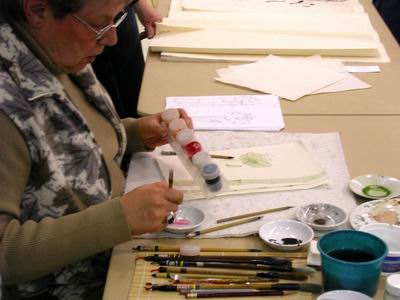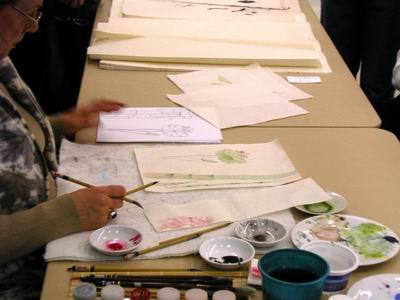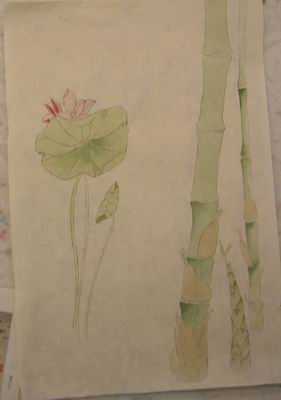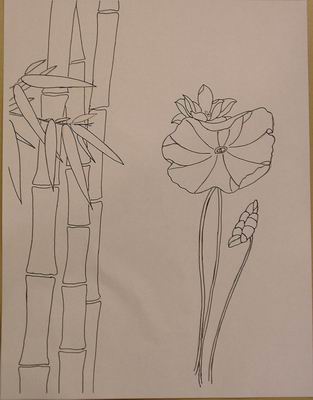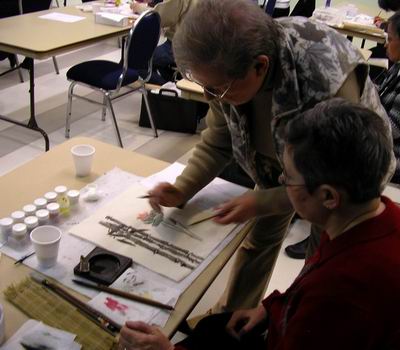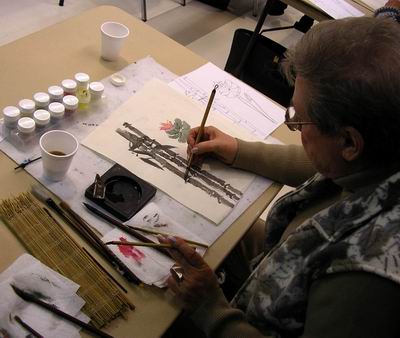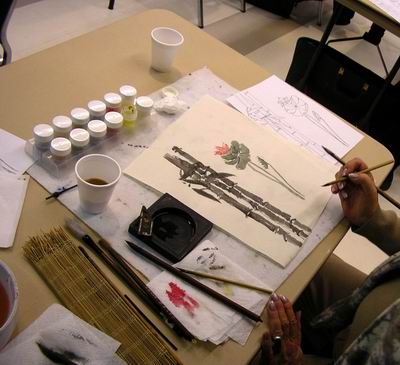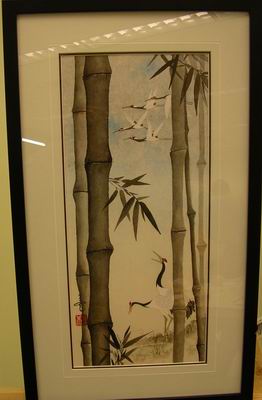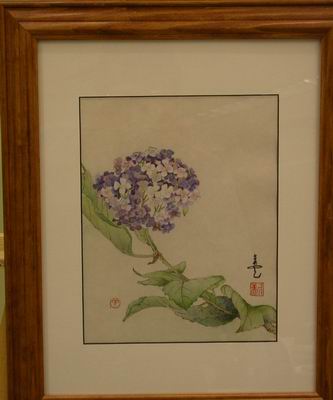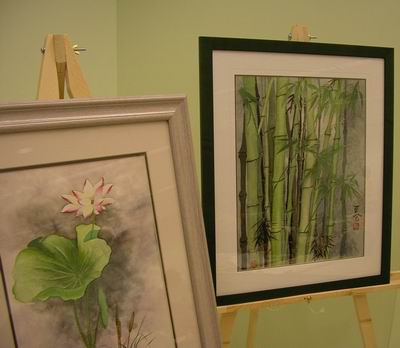Painting on Fine Line Paper with Midge Prong - March 10th, 2007
Working on fine line paper requires its own techniques. Midge Prong, an experienced artist who has painted on this type of paper many times, led a workshop showing the techniques that are best suited to this paper. Midge brought some of her completed paintings on fine line paper for workshop participants to view.
Midge Prong began her workshop by explaining the properties of fine line paper. The most important difference between this type of paper and the traditional rice paper used by sumi-e artists is that it is non-absorbent.
Non-absorbent paper requires a brush, such as this goat-hair brush, to add shading to a subject in small strokes. Little paint is actually on the brush, so it is similar to the dry brush techniques that is used in sumi-e painting.
Midge Prong's has painted many cranes. Her first demonstration of fine line paper techniques featured some cranes in a bamboo grove.
Working with two brushes, one for shading and one for fine lines, Midge carefully shaded the cranes in the painting. Midge begins with an outline of the painting that she will paint. Once the structure is established, Midge adds delicate strokes with little paint to highlight features or how the light falls on a subject.
Often one brush contains only water, which provides lighter tones. It is important to apply the paint in small amounts, Midge told the workshop participants, because it is not absorbed, therefore the paint stays on the paper and dries. A large amount of paint means the paint will take a long time to dry. It also means that the artist loses control and ends with blobs of ink rather than the subtle tones one can get when using fine line paper.
The demonstration continued with Midge Prong showing how with small, detailed, controlled strokes the outline of the cranes turned into expressive painting.
The cranes painting shows the strengths of working with the fine line paper and the techniques that work best with it. The cranes and the bamboo have much subtler tones to them than are found on many sumi-e paintings done on absorbent paper with broad, quick strokes.
Midge Prong turned to another painting of bamboo with a flower. This painting began with green paint, used for the bamboo and the leaves and stem of the flower.
Using the same careful technique, Midge drew the stem of the flower.
Then working with two brushes, the bamboo and leaves were completed.
The petals called for a light red ink.
In this painting, which would become the basis for the one the workshop participants would work on, Midge offset the green tones in the bamboo and leaves with pinkish petals. The fine line paper allows for a wider gradation of tones.
Midge Prong's completed piece demonstrated the range of shading that can be achieved by a steady, slow application of paint. Needless to say, working on fine line paper requires, or perhaps induces, patience.
Midge Prong turned the workshop over to ourselves. However, Midge kindly provided us with some help: the outline of the painting she had just worked on.
In her one-on-one sessions, Midge cautioned most workshop participants to not approach working on fine line paper with the same mindset as working on the traditional, more absorbent rice paper. Working on the fine line paper is the antithesis of the traditional approach. Small, slight strokes is what achieves the big effect later when you work on fine line paper.
With this workshop participant, Midge suggested more emphasis on dark shading to one side of the bamboo to give the effect of light falling on the bamboo.
Demonstrating this technique, Midge worked on one side of the bamboo.
Steadily working away at several of the darker areas in the painting made the painting more defined. Using these techniques on the fine line paper can lead to a more realistic portrayal of the subject.
Midge Prong left some of her completed paintings at the front for further study, such as this study of cranes in a bamboo grove.
These purple and white lilac flowers look startlingly real.
A flower and a bamboo grove using these techniques creates a serene set of images.
At the end of this workshop, participants headed to their art store to pick up more of this special fine line paper and continue their studies.
